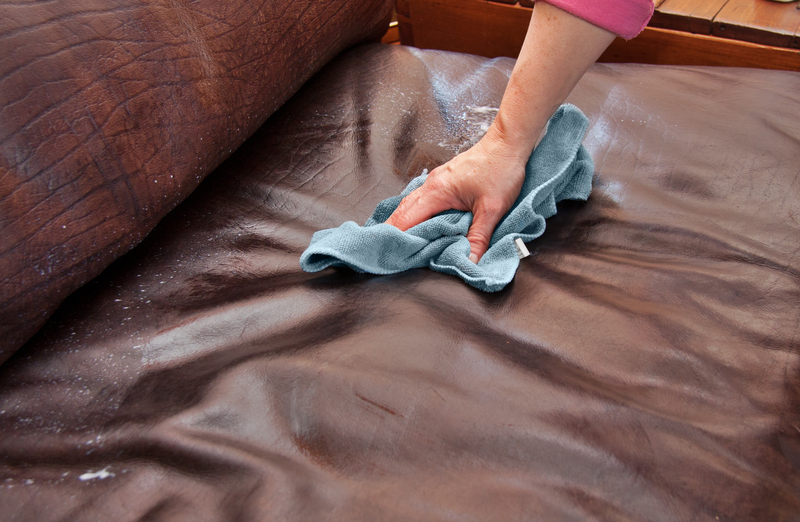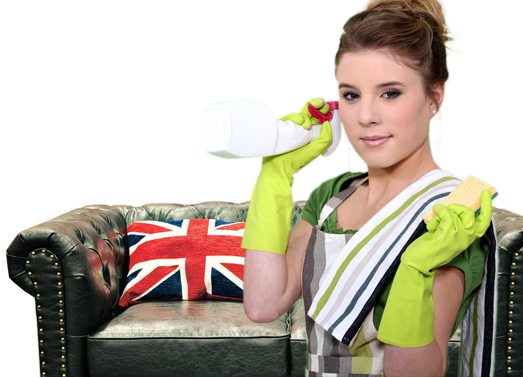The Ultimate Guide to Eradicating Damp Odors
Posted on 31/05/2025
The Ultimate Guide to Eradicating Damp Odors
Are you struggling with persistent damp odors in your home? Musty smells can creep into even the cleanest spaces, making rooms feel unwelcoming and creating concerns about your home's well-being. Fortunately, understanding and removing damp odors is entirely possible with the right approach! This comprehensive guide will reveal proven methods and practical steps to eliminate unpleasant scents, improve indoor air quality, and ensure a fresh, healthy home environment.
Understanding Damp Odors: What Causes the Unpleasant Smell?
Damp odors, commonly described as musty smells, are often the first sign of excess moisture indoors. Not only are these scents unsightly, but they can indicate deeper issues like mold growth or water intrusion. It's important to recognize the various causes that contribute to the persistence of damp odors:
- Poor ventilation: Insufficient airflow allows moisture to accumulate, especially in basements, bathrooms, and closets.
- Water leaks: Dripping pipes, roof leaks, or faulty appliances introduce water into floors, walls, and other structural components.
- High humidity: Humid climates or weather changes can trap moisture indoors, encouraging musty smells.
- Hidden mold and mildew: Microbial growth thrives in dank, dark places and emits strong, distinctive odors.
- Wet materials: Carpets, upholstery, and wood can retain water and foster bacteria or fungus when not dried properly.
Recognition and swift action are crucial to prevent lingering smells from becoming a bigger problem, threatening both your comfort and health.
Is Damp Odor Dangerous?
Beyond being unpleasant, persistent damp odors can indicate mold spores or excessive moisture, which may pose risks to those with allergies, asthma, or respiratory issues. Certain molds produce mycotoxins that aggravate health problems, making removing damp odors a priority for a healthy living environment.

Step-by-Step Solutions for Eradicating Damp Odors
Ready to tackle musty smells for good? Follow these systematic steps to eliminate damp odors from your home and keep your space smelling fresh year-round.
1. Identify the Source of Moisture
- Check for leaks: Inspect all accessible plumbing, especially under sinks, around appliances, and in basements or crawlspaces. Fix any drips or water stains immediately.
- Look for condensation: Windows, pipes, and walls with water droplets signal high humidity or poor insulation.
- Assess ventilation: Ensure all areas, particularly bathrooms and laundry rooms, have adequate airflow and venting.
Effective odor removal starts with eradicating the moisture itself.
2. Remove Mold and Mildew
-
Visible mold:
- Scrub hard surfaces (tiles, glass, plastic) with a mixture of one part bleach to four parts water, or use a commercial mold remover.
- Rinse thoroughly and dry completely.
-
Porous materials:
- Carpets and ceiling tiles affected by mold may need professional cleaning or replacement.
-
Wood and drywall:
- If mold infiltrates these areas, consult restoration experts for safe removal and treatment.
Always wear gloves and a mask when dealing with mold to avoid inhaling spores or touching toxins.
3. Improve Airflow and Ventilation
Proper ventilation is essential to keep spaces dry and free from musty smells. Here are some top strategies:
- Open windows regularly, weather permitting, to allow natural air exchange.
- Install exhaust fans in kitchens, bathrooms, and laundry rooms.
- Use ceiling fans or portable fans to circulate air effectively.
- Keep interior doors open to prevent stale air pockets.
4. Use Dehumidifiers for Musty Odor Removal
High humidity is a common culprit for damp odors. Dehumidifiers extract moisture from the air, dramatically reducing the conditions that let smells linger.
- Select a dehumidifier rated for your room size.
- Empty the reservoir regularly and clean the filter as per the manufacturer's recommendation.
- Maintain indoor humidity below 60% for optimal results.
5. Harness the Power of Natural Air Purifiers
Certain natural and household substances can help eradicate damp smells:
- Baking soda: Sprinkle on carpets or place open boxes in wardrobes to absorb odors.
- White vinegar: Place bowls of vinegar in areas with stubborn smells, or use diluted vinegar to wipe down surfaces.
- Activated charcoal: Set up charcoal bags in cupboards, shoe racks, and under sinks for ongoing odor absorption.
- Coffee grounds: Fresh or used grounds can neutralize unpleasant aromas naturally.
6. Deep Clean Soft Furnishings and Carpets
- Launder machine-washable fabrics: Use hot water and a cup of white vinegar or baking soda for stubborn odors.
- Shampoo or steam clean carpets and upholstery: Consider renting a steam cleaner or hiring professionals for best results.
- Dry thoroughly: Make sure all fabrics are completely dry before returning to their place to prevent re-growth of mildew.
7. Clean and Refresh Walls, Floors, and Ceilings
- Wipe down hard surfaces with an antibacterial cleaner or mild detergent.
- For painted walls, use a mix of warm water and a splash of vinegar on a soft sponge.
- Disinfect tile grout and baseboards where water may accumulate.
8. Maintain Effective Home Habits
- Address spills and leaks promptly: Don't allow water to sit--dry the area and treat for odors immediately.
- Declutter spaces: Crowded closets and packed storage areas restrict airflow and harbor moisture.
- Inspect regularly: Check under sinks, behind appliances, and in attics or crawlspaces for moisture problems.
Long-Term Solutions for a Damp Odor-Free Home
But how can you stop damp odors from returning? Prevention is the most effective strategy. These long-term measures will ensure musty smells don't make a comeback:
Waterproofing Solutions
- Seal foundation cracks: Prevent water entry by filling any visible gaps in basement walls or floors.
- Install vapor barriers: Add heavy-duty polyethylene sheets in crawlspaces or underflooring if your home is naturally humid.
- Upgrade drainage: Clean gutters regularly, extend downspouts, and make sure the ground slopes away from the house.
Regular HVAC Maintenance
- Service heating and cooling systems annually to check for leaks or condensation issues.
- Replace air filters regularly to remove dust, mold spores, and odors from recirculated air.
- Clean ductwork every 3-5 years for optimal air quality.
Humidity and Moisture Monitoring
- Install a hygrometer to track indoor humidity year-round.
- Use smart home devices to automate fans or dehumidifiers when moisture levels rise.
Natural Ventilation and Plant Choices
- Choose indoor plants such as peace lily or Boston fern--these help absorb excess moisture and purify indoor air naturally.
- Avoid overwatering houseplants to prevent mold in soil.

Frequently Asked Questions About Damp Smells
How can I tell if the musty smell is mold?
Musty odors often signal the presence of mold, especially if found in combination with visible spots (black, green, or white) on surfaces. Persistent smells worsen after rain, laundry, or cooking, indicating mold or mildew rather than ordinary dust or dirt.
Why do damp odors return even after cleaning?
Recurring smells suggest an ongoing moisture source--perhaps a hidden leak, ineffective drying, or high humidity. If you only treat surfaces, the underlying issue remains. Always track down and address the root cause to prevent the smell from coming back.
Can I remove damp odor from clothes?
Yes! Launder garments in hot water with an oxygen-based bleach or vinegar solution. Dry clothes outside in direct sunlight if possible. For persistent odors, repeat washing or soak overnight in a vinegar solution.
Are commercial odor removers effective?
Many commercial products neutralize surface odors quickly; however, they do not fix deeper moisture or mold problems. Use these as a temporary fix while you seek out and solve the core issue.
Do air purifiers help with damp odors?
HEPA air purifiers equipped with activated carbon filters trap spores and absorb many acidic or organic musty smells, complementing other odor-removal efforts.
Conclusion: Enjoy a Fresh, Healthy and Odor-Free Home
Eradicating damp odors and preventing their return is achievable! By identifying moisture sources, thoroughly cleaning affected areas, improving ventilation, and adopting effective preventive habits, you create an inviting and healthy home environment.
- Don't ignore that musty whiff--it's a call to action for your household health.
- Start with the basics (drying out, cleaning, airing), then move to ongoing solutions (ventilation, dehumidification, and waterproofing).
- Maintain vigilance--regular checks keep damp odors at bay for good.
Armed with the tips from this ultimate guide, you can banish damp odors and reclaim your space--making it fresh, comfortable, and inviting for everyone.
Remember: tackling the root cause of dampness is the key to lasting odor elimination. With proactive care, you can say goodbye to musty smells forever!





